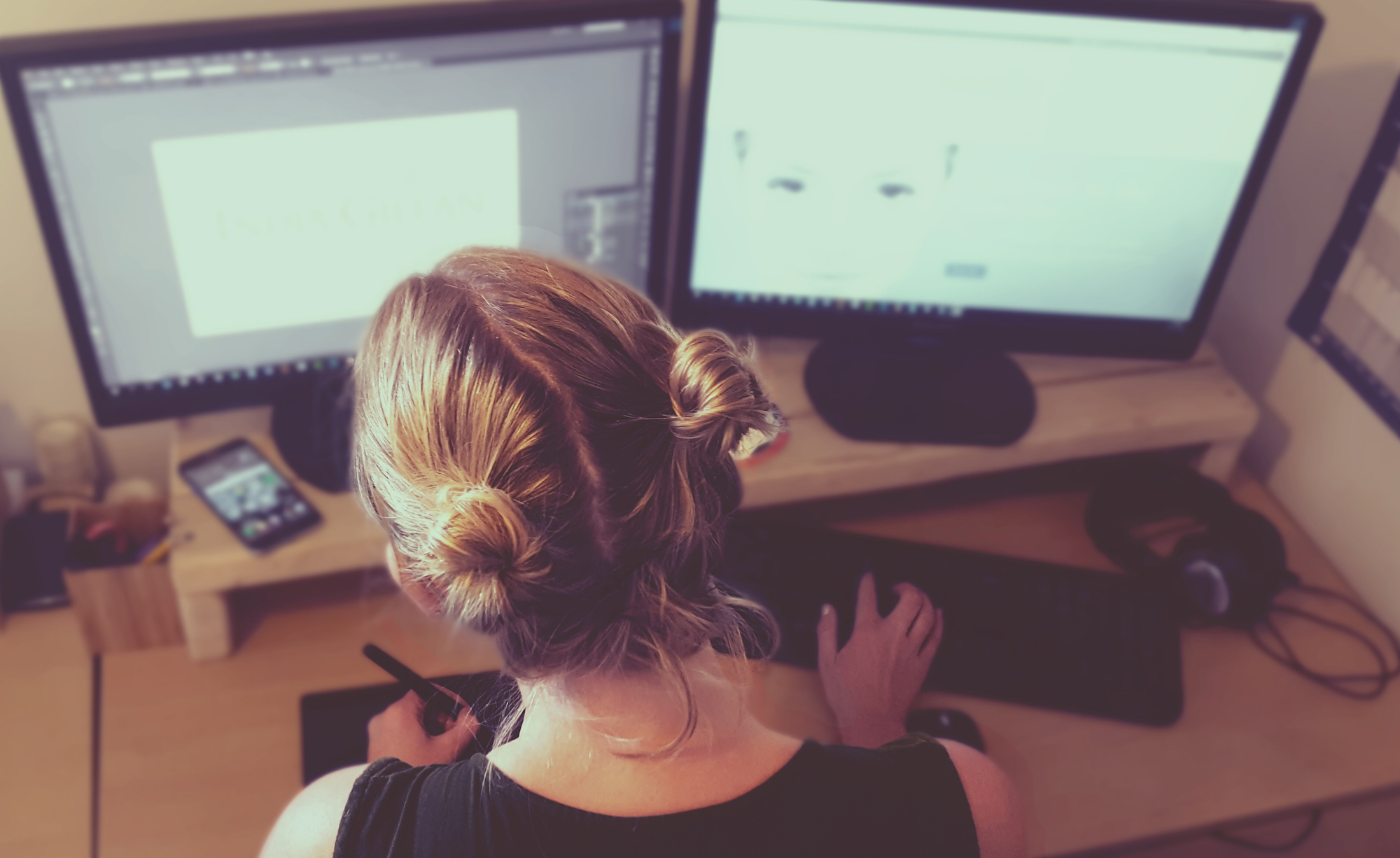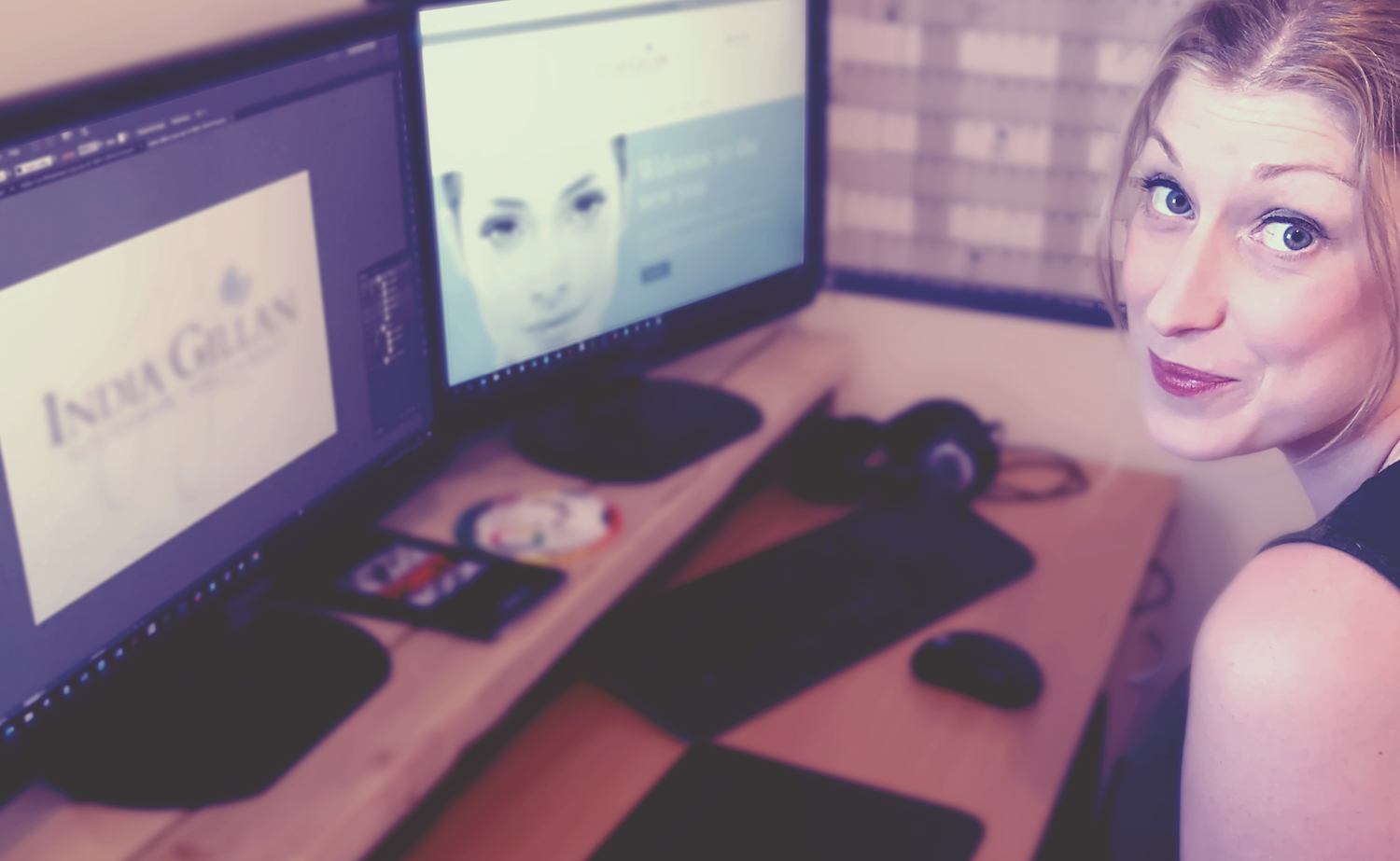Invoicing for Designers: 8 Easy Steps to Get Paid on Time
Designers are always keen on delivering the best solution for their clients. However, it is no secret that the same band of committed professionals pays less attention to keeping track of their payments and managing their invoices. The reality is, using the right tools and processes here is as important as having the right tools for design work.

Cash flow management is an integral part of a business: when you don’t get paid on time for the work you have already completed, it will have a major impact on your bottom line. For designers, generating invoices for clients or reminding them about late payments is not the most enjoyable part of their job. You would rather spend your time on figuring out the next design solution. However, keeping track of your invoices and recording payments is essential if you are running a designing agency.
In this article, we particularly look at how graphic designers can master the art of invoicing in eight easy ways—but note that these instructions are equally applicable in other domains of design services.
Let’s begin:
1. Decide on your price
‘How much should I charge a client?’ is the million-dollar question, sometimes even literally. Pricing is always an element which designers cannot disregard and based on experience, competition, service level (especially speed of service) and location, designers can decide on a price tag.
A better way to manage your finances
With Hiveage you can send elegant invoices to your customers, accept online payments, and manage your team — all in one place.
Even though the pricing seems to be fixed for certain projects, it is always negotiable. Designers tend to think that negotiating is part of their game but most of the time, clients simply refuse to do that. However, most designers consider the process of negotiating to be practical because it helps you to communicate better with your client and create a positive impact on your relationship with him or her — a win-win situation for both parties.
Hiveage user and Founder of RC Design, Rachel Christmas said:
Most important part of invoicing graphic design clients is being very up front about the costs so there are no surprises, and not underestimating your talent when doing so. I make sure to be very detailed on each line item – research, edits, designer hard costs incurred – so they realize the full value of the service.
Having said that, designing is a profession that needs lots of skills and talents. It takes years to master your eye to choose the perfect colour combination or sketch the ideal layout. So it is important that you charge what you are really worth: do not confine yourself into the perception that you will lose your clients if you charge a higher fee. It is never easy to work with clients who always demand the cheapest option. Negotiate your price, or even offer a significant discount, to users with whom you see greater value in retaining as your clients.
2. Create Better Terms
When a client initially contacts you for your details, it does not guarantee that you are going to get the project. To secure the deal, you need to lay out proper payment terms and conditions for your client: you need to do your own research to create a quote/estimate that gives clear information to your client about your terms. Most importantly, those terms should reflect your skills and talents as well.
According to this article, these are some of the basic terms you need to include in an estimate:
- Estimate number (as important as the invoice number)
- Your final price
- Payment due date
- Type of payment
- Fee for late payments
- Cash on advance: full or partial?
- Number of revisions included
- Refund policy
Mentioning these important terms will avoid confusions and surprises during the project. You are more likely to get paid late (or perhaps not even a single penny) if you keep on surprising your client with late additions.

Setting clear expectations with your client is essential to a happy and healthy vendor/client relationship. Therefore, the most important step a designer should follow when invoicing a client is to be clear in what is included in the project for which the invoice is for. Things such as what file formats will be delivered, how many rounds of revisions are included, and the payment terms are just a few of the items you should touch on when delivering your invoice. The more you are upfront and direct about what is included, the less room there is for miscommunication and false assumptions. In the end, the more detailed your invoice, the better.

At O Design we always include a personalised note in the footer of our invoice. This note thank the client for their business and reinforces the preferred payment methods and payment terms. We think this helps us with prompt payments from our clients and the personalised note helps to show that we value their custom.
Having proper payment terms from the outset will ensure a healthy relationship with your clients, Kay Mankoo of Delve Design said:
Payment terms will let your client know exactly how and when you expect payment. These terms should include whether you bill hourly or by the project when a client needs to pay you and consequences they face if they miss a payment date. As a business, we need a steady cash flow, and setting our payment terms like this in our invoicing process really helps us in getting paid on time.

Allow a certain amount of time from that date for clients to make the payment, and be clear if there are any fees should they not pay on time. This helps everyone know exactly what is expected and when and means you are far more likely to get paid on time as you have set a specific date. I like to let my clients know I will be sending them an invoice a little while in advance as well, so nothing comes as a surprise!
3. Use an online invoicing service, or use a good graphic design invoice template
Using an online invoicing software for designers will help you to check the status of your invoices on the go and let you manage them efficiently. Getting on board with such services will always speed up your invoice-related chores. As opposed to maintaining spreadsheets or manual documents, an online service brings better organization as well as high accuracy to your financial data while significantly reducing both cost and time. This is why we have made Hiveage an easy-to-use online invoicing service with powerful features that will help you to send professional invoices and estimates, track time, expenses and mileage, using a single platform.
If you are just starting up and don’t have the budget for an online invoicing service—note that Hiveage also comes with a free plan. You can also consider using one of the graphic design invoice templates that are reliable.
4. Design professional-looking invoices
Why not use your amazing designing skills to conjure up an invoice that looks beautiful? A well-documented invoice with an elegant yet simple design will not just mark you as a great designer but also a well-organized business person with professional acumen. Take few minutes off your busy schedule to fine-tune your design. Your invoice speaks of you and your brand: do not consider it lightly.

A good invoice must reflect with clarity everything that was promised to be delivered during a project. Listed items should be familiar to the client otherwise, they could come across something he didn’t agree on being charged for. Needless to say, a good invoice system only works if the communication leading to it is done properly. Which is why a designer should always work on a perfectly clear estimate, proposal or statement of work. That first step will make invoicing a breeze when the job is done.

Creating a good experience for clients doesn’t just end when the job does; the messages we write in our invoices are another opportunity to connect with our clients. I like to personalize the messages I include when I send an invoice. Letting customers know that I look forward to working with them again and am excited about their projects is one step towards building a stronger relationship.
5. Prepare your professional invoice quickly
After a hectic design project, many designers would love to take a well-deserved break. What happens usually with these long breaks is that designers tend to forget about the invoice they had to send a few days back to the client. This will lead to delayed payments and unpleasant clashes with the client. You have only got yourself to blame because you did not send the invoice on time.
For Arika Yager of Arika Kay Designs, invoicing has been a struggle for quite some time. After so many trials and errors, she found out the importance of completing an invoice then and there rather than sitting on it for a long time:
I have discovered that when someone asks for a quote or I take on a project it is important for me to sit down that evening and create the invoice. The most important step is to invoice regularly. Once it is created I send it out then or wait until I am farther along in my process and require payment before completion.
Many designers suggest that you should start working on your invoice before you actually finish it. Obviously, it would not look 100% complete but it would only take 10-15 minutes of your time to add the rest of the details upon completion of the project. It’s also better to for your cash flow to invoice quickly and collect the money from your client.
Hiveage user and designer Margaret Weinberg finds it important to have a schedule for invoicing and stick with it.
In the past, I would put it off because it felt like it got in the way of my creative work. However, procrastination on billing is a disservice to my clients and can ultimately discredit my status as a professional, resulting in annoyed clients and non-payment. I now make a concerted effort to bill monthly, and bill clients immediately if they request it. It’s as important as any design deadline.
6. Add all necessary details to your graphic design invoice
Make it easy for your clients to look for your details by adding them in the email body. Make sure you put them in the invoice as well so that it will be easy for them to pay you quickly.
Some of the details you should add in the invoice:
- Your bank account details
- Payment terms
- Payment due date
- Charges for late payments
Relevant details in an invoice create a platform for better communication between you and the client. If the client is avoiding your payments, those same details can be used for legal purposes.

“The most important step in invoicing my clients for my design business is a thorough description of billing items. You want to remove any mystery surrounding the design and optimization process by fully describing what work you performed, how long it took to perform the work and how much the charge will be.”
In the invoice, you need to mention what services have been performed for the client and the charges of those services as well. For the client, it will clearly show what you have done for them, help them to identify the elements they have been billed for and what they have already paid for. For you, it will help you to manage your records and know the details of clients who have already been invoiced.
Millicent Flynn, Founder of Millicent Design shared her thoughts on being clear cut about the details you are going to share with your client.
The most important step when invoicing a client is to justify the value of your services by clearly communicating what’s been achieved in the invoice description. We must remember that our clients aren’t designers and may dispute your invoice if they don’t think you’re delivering immediate results. From idea generation to market research to conceptualisation – include it all. This will help the client recognise the process and value of design. They’re less likely to dispute your invoice and more likely to pay on time!

The most important thing is to be transparent. The client should be able to reproduce what he is paying for, so I always include a short description of the work package I am charging the client for. If using a ticketing system like JIRA, I always reference the ticket number in the description, so that he can get the full description in the ticketing system.
Jason Bumblis of Pacer Studios said detailed invoicing has surely helped his organization to get paid faster.
“The most important step when invoicing a client is to take the time and provide detail. No one likes paying when they are not sure what they are paying for. Over the years we have found that when we are detailed with our billing that it gets us paid faster and results in less inquiries from clients as to what the charges are for.”

It is super important to itemize your services in an invoice. Don’t just say ‘design work’: clients want to know exactly what they are paying for.
An article in Entrepreneur discusses the importance of putting all necessary details in an invoice, using the right language. It can significantly reduce your time to getting paid and also creates a connection with your customer, defines a process to get paid and removes obstacles that would otherwise hinder payment.

[An estimate] provides the client with an accurate scope of what they are to pay for. Further this will (hopefully) alleviate any confusion or ambiguity as to what the expectations and duties are of the designer and, of course, what the client is paying for. In essence, it takes the guess work out and I find clients are more inclined to remit payment when they know exactly what they are getting!
7. Make it easy for your clients to pay
Provide your clients the capability to complete the payment as soon as they receive the invoice. When you add all the relevant details in the invoice as mentioned above, it is just a matter of time you receive your payment in your bank account.
Elisa Gutiérrez of Elisa Design recommended the payment should be broken into different elements at different stages of invoicing. Here is what she said:
For example, if the payment is broken into three parts, the first payment will be expected when the design direction has been approved. So, immediately after the design direction has been approved, a notification should be sent to the client, alerting them that the first invoice will be sent and that it is due immediately. The second payment will be invoiced when first complete proof of the project is presented. Again, a note could be sent previous to the presentation of the proof, alerting the client that a new invoice will be sent. And finally, final payment will be invoiced once files are approved and ready, but before the files have been sent to the printer.
Why not try an online payment method? You can easily enable a payment gateway in your invoice to make it convenient for your client to pay you. Enabling these gateways will allow you to take payment by credit card or direct debit without having to set up any special facilities with your bank. Hiveage supports a number of online payment gateways and lets you accept online payments from your users.
8. Follow up to avoid late payments
When doing a business, you find clients who are rather lax about paying their invoices, and another band of them who will disappear without paying at all. It is quite frustrating.
When your unpaid invoices get near their due dates, this article in Vandelay Design suggests you to take a moment to follow up with the client, remind them, and see if payment is on the way or if there are any problems. Just send them a casual email. Ask them how they are and remind them about their payment very politely, using words such as ‘please’ and ‘thank you’. You can also follow up with a polite phone call. Do not be rude and ask for money: just have a friendly chat with them and grab the perfect moment to remind about the payment.
Ramon Thompson of Newsaturday Design Studio said:
Clients, unlike us, are worrying about a million other things regarding their business. It helps to send a reminder to help keep your invoice top-of-mind, reducing the chance that a payment will be missed. I’ve had clients thank me for sending reminders, and insist that I keep doing so because they will forget.
If all these don’t work, be very firm and ask for the payment. Do not forget to remind them how quickly you rendered your service to them without questions and the same should be done when paying you for the services offered.
Conclusion: Invoicing for the Graphic Designer
Invoicing doesn’t just help you to grow your business and get paid on time as a designer, but also build professionalism in doing business with your clients. In this article, we dug into 8 simple, yet effective tips that every designer should follow in order to get paid on time by properly invoicing their clients. They are:
- Decide on a pricing strategy
- Create practical terms and conditions for your clients
- Opt for an online invoicing service
- Design beautiful invoices
- Act promptly to complete invoices
- Add all relevant details
- Enable easy payment methods
- Follow up on the progress of the payment
Do you have any other tips which will make invoicing a pleasant experience for designers? Let us know your thoughts in the comments section below!
Join thousands of business-savvy entrepreneurs on our mailing list.
Curated emails that’ll help you manage your finances better.




